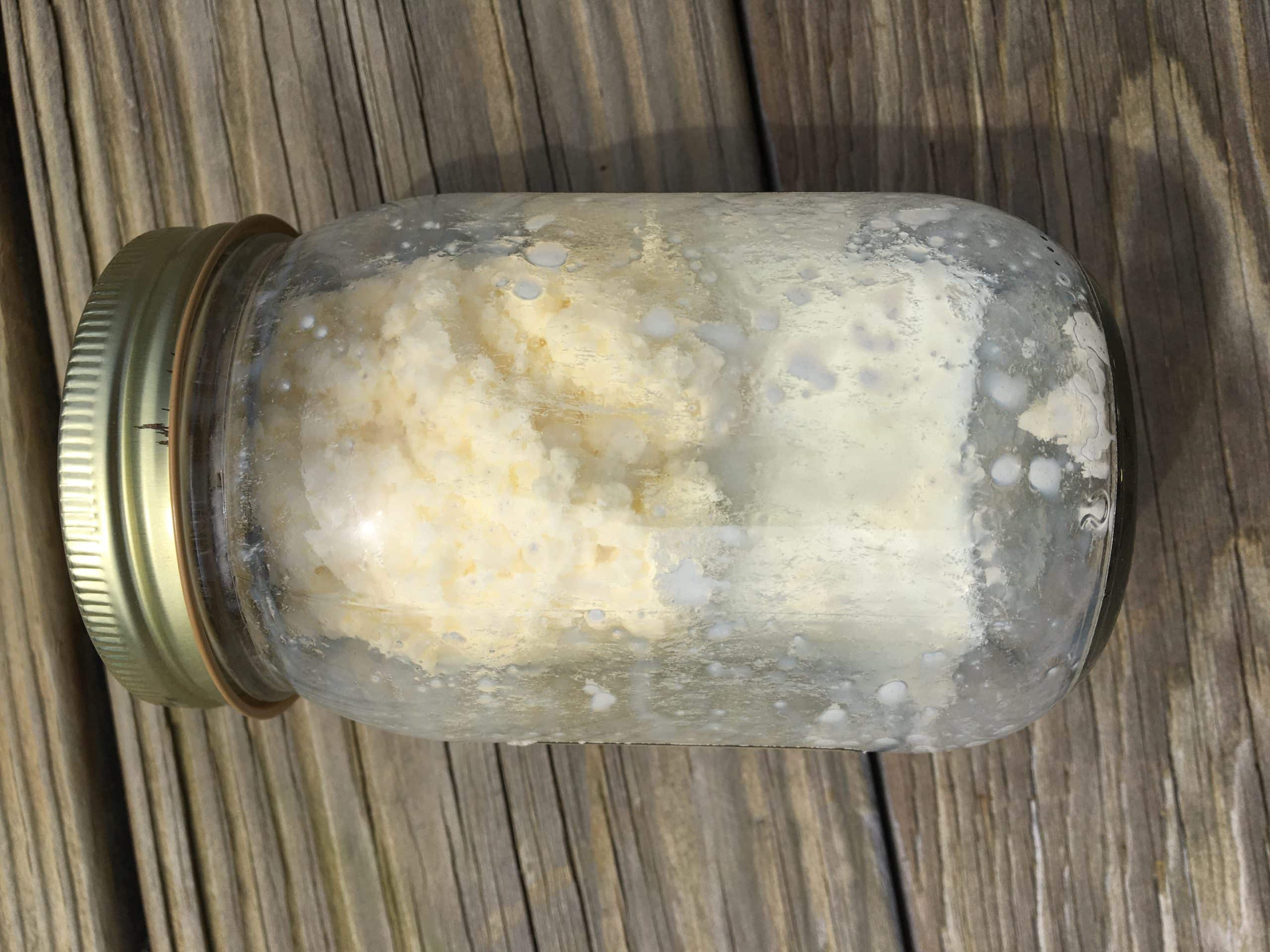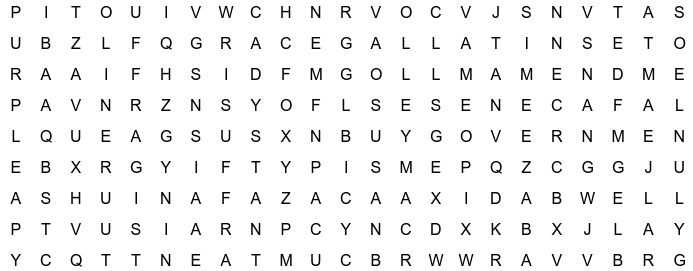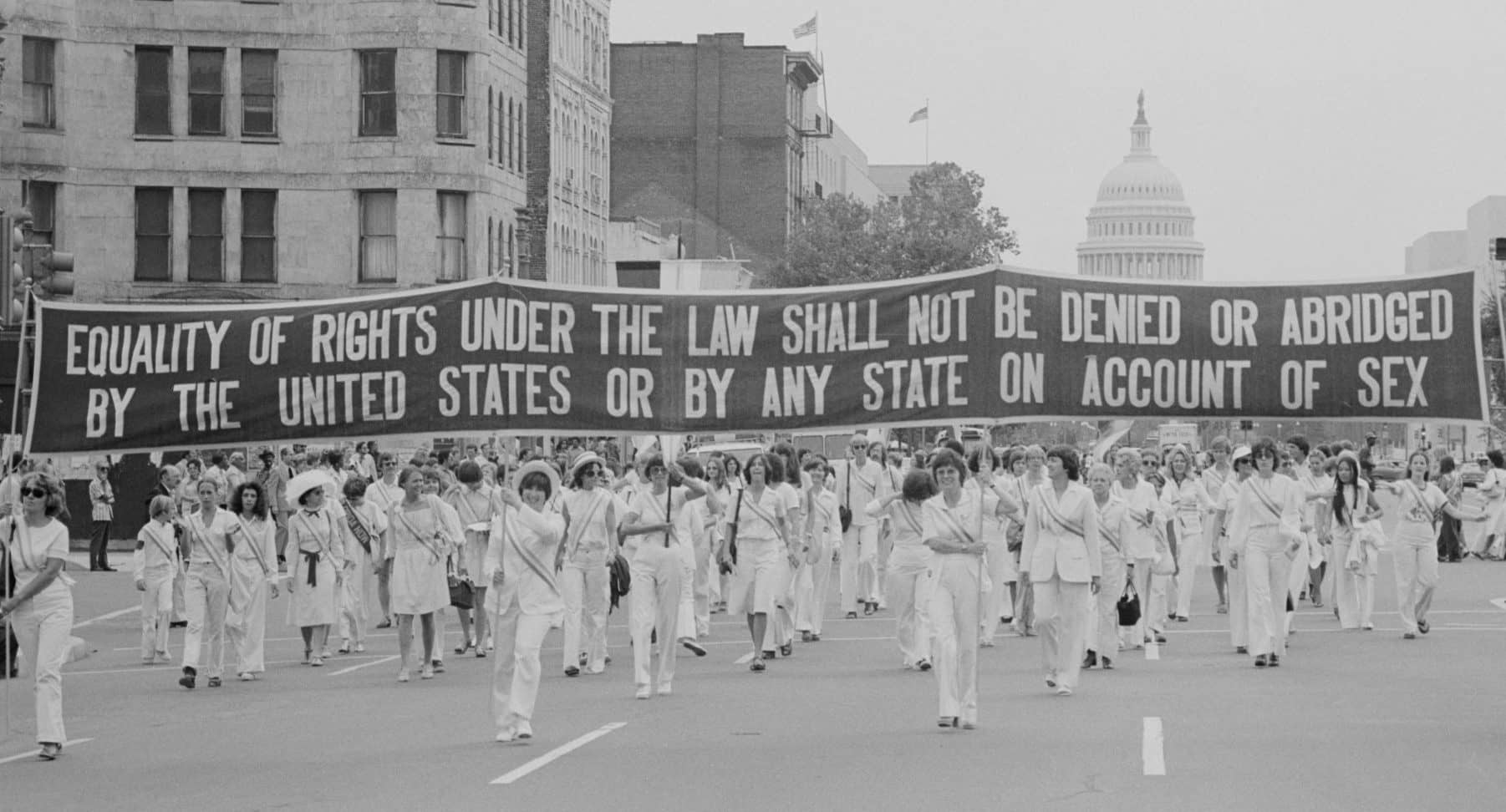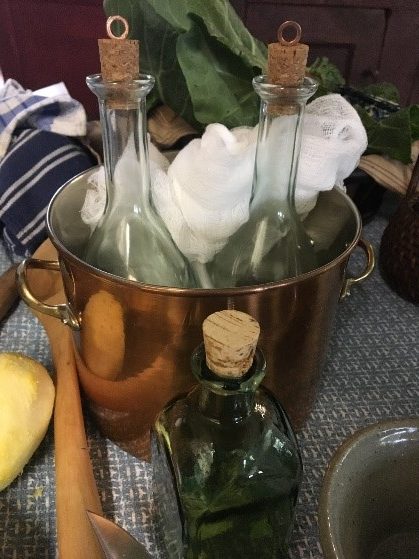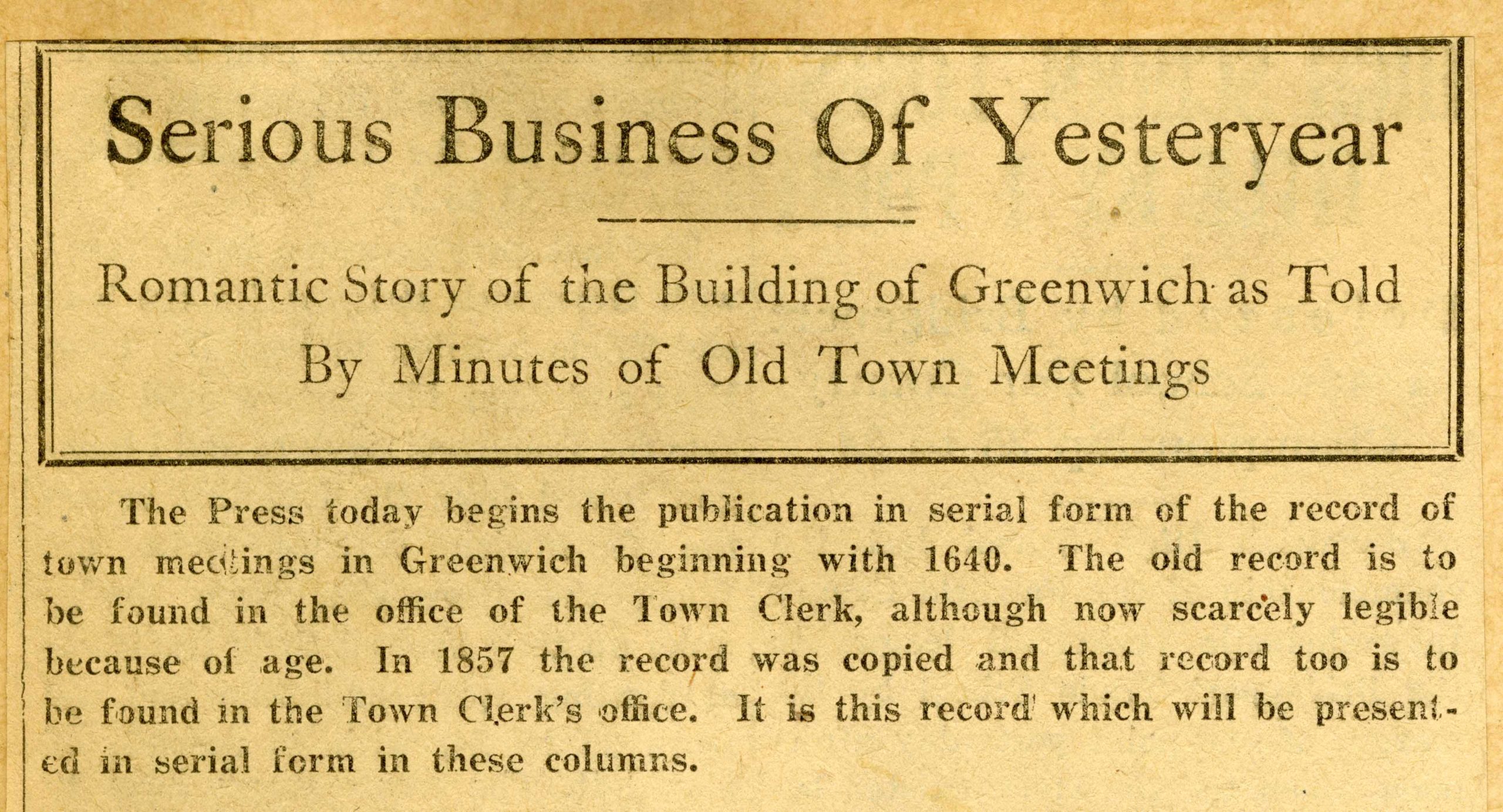The Greenwich Historical Society is excited to present Suffrage Stories, a series of short videos exploring artifacts and stories from the exhibition An Unfinished Revolution: The Woman’s Suffrage Centennial.
In this edition of Suffrage Stories, exhibition curator Kathy Craughwell-Varda introduces viewers to three clothing ensembles worn by Connecticut women engaged in the fight for women’s rights, from the Progressive Era to today.
Suffrage Stories: White, the Color of Women’s Rights
More on the Color White and the Women’s Rights Movement
Upon entering the exhibition gallery to view An Unfinished Revolution, visitors encounter three very special items of clothing that tell the story of Connecticut women’s engagement with the fight for equal suffrage, and the continued fight for equal rights through the modern era.

A white cotton day dress dating to about 1913 is an example of what a woman may have worn to march alongside her fellow activists in a suffrage parade held in Hartford, Connecticut, on May 2, 1914. A hand-sewn, brilliant purple, parade cape, which was worn by a marcher in the 1914 parade, is draped over the dress. Displayed across the chest is a VOTES FOR WOMEN sash bearing the purple, green, and white color scheme used by the Connecticut Woman’s Suffrage Association.
The color white, often symbolizing purity, has long been associated with women’s rights. White, gold, and purple, the colors utilized by the National Women’s Party, have become the de facto colors of the women’s suffrage movement.
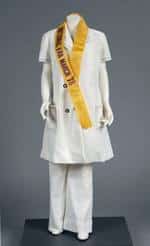
In June 1978, a woman from Glastonbury, Connecticut, wore this distinctive white pantsuit paired with an eye-catching yellow sash to attend the Women’s March on Washington. She joined 100,000 other marchers on the National Mall to show support for the passage of the Equal Rights Amendment. Women’s rights activists in the 1970s paid homage to the suffragists of earlier generations by wearing white.
Today, the practice of wearing white as a gesture of respect for the legacy of the women’s rights movement continues to be a potent symbol. In 2019 and 2020 many female members of Congress wore white as an expression of solidarity and tacit protest during President Donald Trump’s State of the Union Address.
In An Unfinished Revolution, we are extremely fortunate to have on loan the white dress and jacket worn by Connecticut Congresswoman Jahana Hayes during the 2019 State of the Union Address. Elected to office in 2018, Representative Hayes is Connecticut’s first female African American congressional representative.
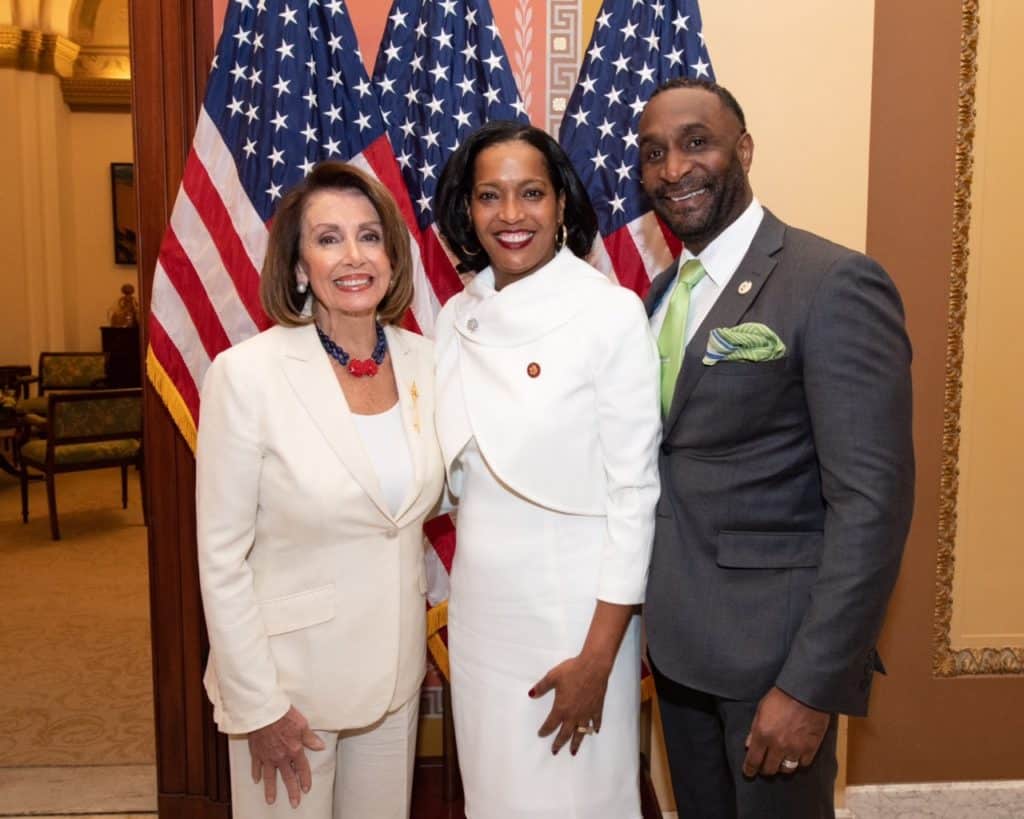
Although women in the United States gained the right to vote 100 years ago, the ongoing fight for gender equality continues to this day. Clothing is an outward expression of identity and can communicate and show allegiance. Understanding how women of the past used clothing and fashion to express political messages can help us unlock the coded messages in clothing worn by politicians and public figures today.
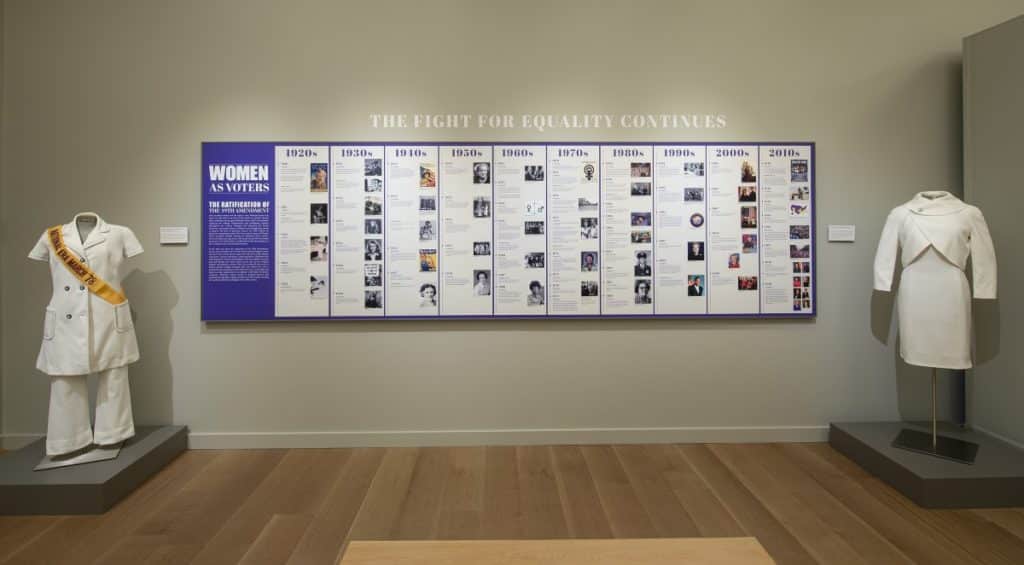
White dress, 2019 (right), courtesy of Representative Jahana Hayes (D-Connecticut). Photo by Paul Mutino.
More about An Unfinished Revolution — The Greenwich Historical Society is proud to join museums and history organizations across the nation in marking the 100th anniversary of the passage of the 19th Amendment with a special exhibition devoted to the women’s suffrage movement. Through photographs, letters, postcards, costumes, banners, and other objects, An Unfinished Revolution: The Woman’s Suffrage Centennial tells the story of the long fight for women’s right to vote waged by women living in Greenwich and their compatriots across the state and the nation.
An Unfinished Revolution opened to the public on February 5, 2020, and due to COVID-19 closures, has been extended to run through November 1, 2020. It is supported in part by a grant from Connecticut Humanities and is generously sponsored by the PepsiCo Foundation and Northern Trust.
Maggie Dimock is Curator of Exhibitions and Collections at the Greenwich Historical Society.
